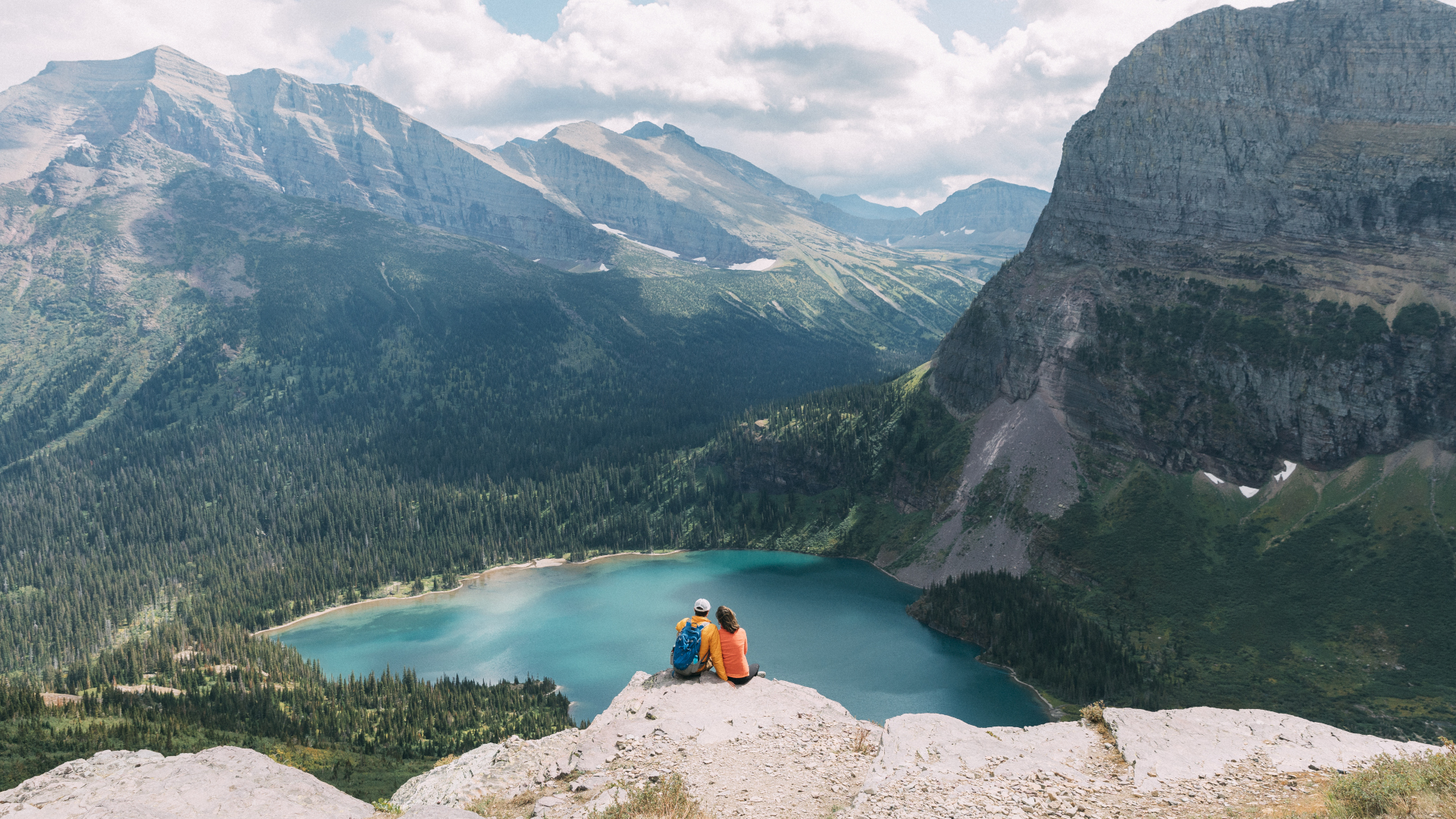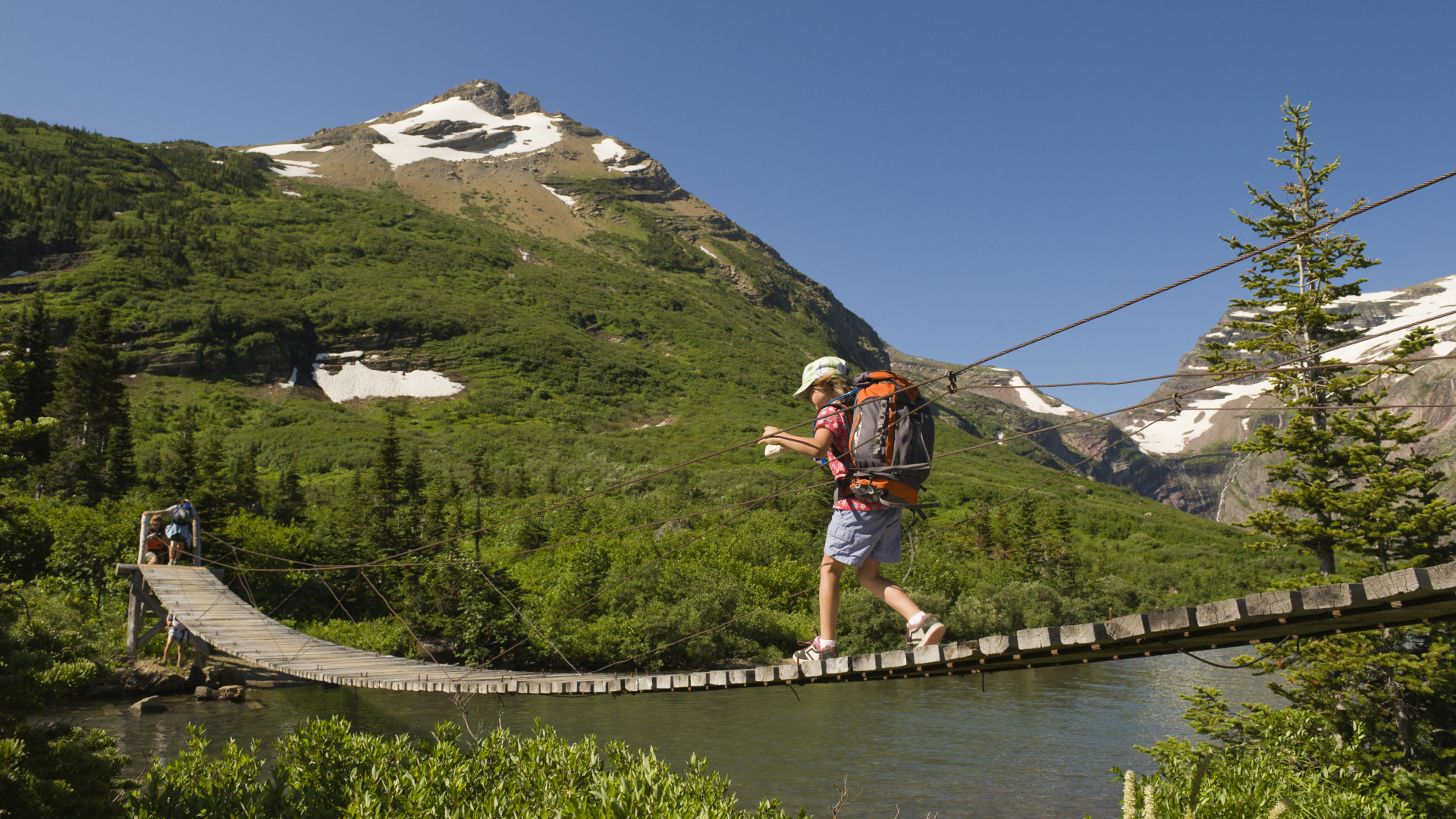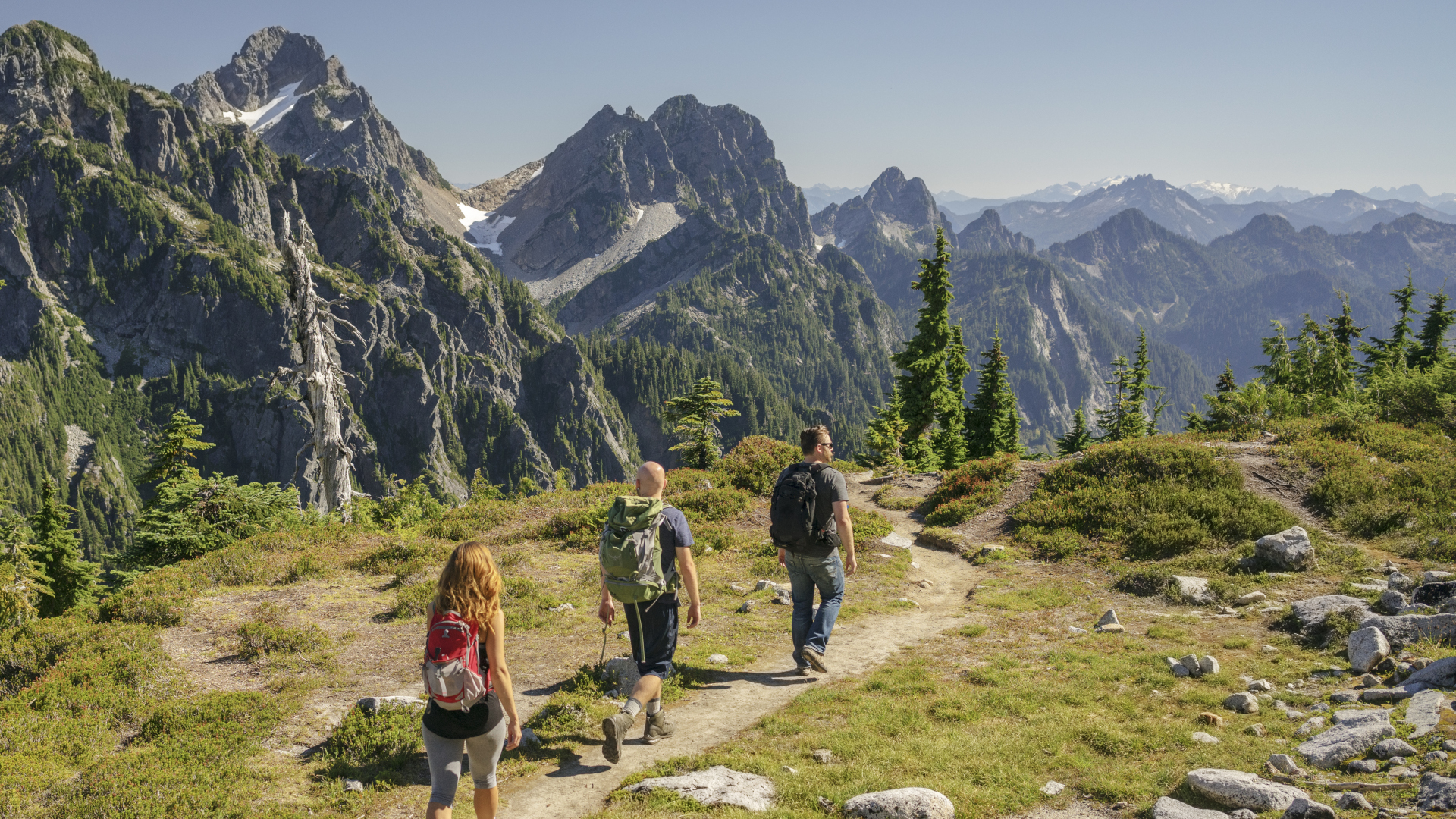How to navigate the US National Parks reservation system
A travel expert gave us her top seven hacks for navigating the National Parks reservation system this summer to make sure you keep having unforgettable adventures

The novelist Wallace Stegner called them America’s best idea, and given their outstanding natural beauty, it’s no surprise that US National Parks are drawing more nature lovers than ever before. It’s also unsurprising, then, that the National Parks Service is being forced to act to reduce congestion on some of the parks’ roads and trails. As a result, a number of popular National Parks have implemented reservation systems to act as crowd-control measures during the busy summer months, which unfortunately means you may not be able to just jump in the car and drive to Acadia or Yosemite on a whim this summer.
To help you navigate the until-now-uncharted waters of the National Parks reservation system, we spoke to outdoor travel expert Alex Schnee, who has traveled extensively in the National Park system. Schnee grew up in Montana where she regularly explored the best hikes in Glacier National Park, and loves the park so much she even got married there. She has also kayaked down the Amazon and hiked to Everest Base Camp, so we figured if anyone can take on the tricky world of permitting, it’s her.

Why do some National Parks require reservations?
So why, when the world is finally opening back up after two years of lockdowns, has the National Park system implemented measures to reduce visitation?
“A lot of it has to do with the crowding. They suddenly became very popular after the pandemic, as people realized ‘wow this is something that could change my life,’” explains Schnee, who herself credits spending time in natural environments such as the ones National Parks protect, as helping her to overcome an eating disorder, and giving her the confidence to start her own business. But National Parks simply aren’t able to keep up with the demand generated by increased awareness of the benefits of spending time in nature.
“There’s just not the staffing that there used to be – the National Parks don’t receive a lot of funding in relation to other government programs, and a lot of the infrastructure was built maybe a 100 or 150 years ago when there were a lot fewer people, so the parking lots and visitors centers simply aren’t big enough to accommodate these numbers of people.”
However, the upside is that while the reservation system might feel exclusive when you’re on the outside and trying to get a permit, when you do get one, you’ll ultimately have a better experience for it.
“We were at Glacier last year with our reservation tickets and it did make the experience so much better. You have a lot more space and an opportunity to connect with nature in a way that you can’t with the crowds,” recalls Schnee.
All the latest inspiration, tips and guides to help you plan your next Advnture!

Which National Parks require reservations?
Before you give up on your National Parks plans for the summer, there’s only a relative handful of parks that have instituted a reservation system for 2022. Of those, some are only for certain trails or areas of the park:
- Acadia: Vehicle reservations required for Cadillac Summit Road through October 22.
- Arches: Timed entry ticket required through October 31.
- Glacier: Ticket required to access Going To the Sun Road through September 11.
- Haleakala: Reservation required to enter between 3 a.m. and 7 a.m. for sunrise.
- Rocky Mountain: Vehicle permit required to enter the park through October 10.
- Shenandoah: Permit required to climb Old Rag Mountain through November (800 released per day)
- Yosemite: Timed entry tickets required from 6 a.m. to 4 p.m. through September.
- Zion: Permits required, via lottery, to hike Angels Landing.
For all of these reservations, you’ll need to navigate to recreation.gov to make your application, which overall Schnee advises is quite straightforward – with only one small hitch,.
“You just go in on your selected day and check to see if there are tickets. The difficulty that people are running into is that each park has a different system. So when you go in to have a look at Glacier, it’s a completely different system from Acadia or Arches, so that can be a little confusing especially if you are planning on visiting multiple National Parks.”

What to do if you don't have a reservation for a National Park
“I hate to be all doom and gloom but the parks are all booked up for this summer,” warns Schnee. Many of the reservation systems open up 90 days in advance and pretty much sell out on that day. But don’t be discouraged – based on her own experience, Schnee has some some genius hacks to help you navigate the reservation system, and make sure you still have some memorable adventures ahead of you.
1. Check reservations the day before
Plans change and cancellations happen all the time, and as a result, Schnee says you can sometimes get tickets the day before your intended visit, if you’re organized.
“You have to be on the app or website at a very specific time because tickets will go fast. For Glacier, you have to be online right at 8am mountain daylight time, for example.”
So if you’re in the area already or happen to live near a National Park on the list, check what time you need to be online, set an alarm for five minutes before and take your chances. You might get lucky, and if not, keep reading…
2. Plan for next year
Though it might not be what you want to hear if you had your heart set on Acadia in 2022, Schnee warns you’ll ultimately have the best luck if you plan ahead.
“My recommendation if you really want to have your trip planned well in advance is to start planning on April of next year,” advises Schnee. Since the parks on the list will, in all likelihood, have reservation systems again next year, it’s best to start planning now so you know when tickets will be released for your 2023 dates.

3. Visit during off-season
If you have a little wiggle room in your schedule, consider waiting until off-season. For most National Parks, high season is May to September, which you’ll have noticed is when you usually need a reservation. But if you can wait until October, you’ll most likely enjoy really good weather for hiking (AKA, a little cooler), fewer crowds, and no need to battle with other hopefuls in the reservation system.
4. Go early (like, really, really early)
If you’re dead set on visiting one of the National Parks on the list and you can’t get a reservation to save yourself, there is another option – set your alarm.
“Parks are open 24/7, and a lot of people don’t know that. Normally, if you get in before or after the time period on the reservation system, you're fine,” explains Schnee. In Glacier, for example, that means arriving at the park before 6am, or waiting until after 4pm. Fortunately, with longer daylight hours in the summer and one of the best headlamps, you can still enjoy plenty of adventure time during off-peak hours, and maybe even some stargazing. In fact, Schnee says that even with a reservation, she prefers the early start.
“The crowds are a lot anyway, so I kind of like to get up there at 5am. Even with the reservation system, those parking lots can get really full.”
Get into the park early and you can have the trails to yourself and be enjoying lunch while other visitors are still thinking about pulling on their hiking boots.

5. Book a tour
Perhaps Schnee’s best hack is to book a tour of the park, instead of organizing your own itinerary, which gets you in without a reservation.
“Another thing people don’t realize is if you have a tour booked, you don’t need a reservation. So if you are taking a tour within the park, that counts as your reservation ticket.”
Not only does this get you to the front of the queue, but it’s a great way to support the local economy and get expert insight on the area.
“I’m really encouraging people to book local tours this year because you are supporting a local business and the local economy and you’re also getting in for free and you don’t have to worry about reservations.”
6. Visit the surrounding area
Here’s the thing – the beautiful environments that National Parks protect don’t stop at the entrance gates, so if you can't get through the gate, explore the surrounding area.
“If you don’t get your reservation, check right around the park because there’s usually a National Forest or preserve that you can visit instead, and likely it’s equally as beautiful, with the same kind of nature but you don’t have to worry about the crowds and the reservations.”
In fact, Schnee herself has taken to guiding tours of the Flathead Valley and Lone Pine State Park, both of which are right outside Glacier and offer similar scenery with a much more tranquil experience.
“We’ve got millions of acres of National Forest here, we’ve got Flathead Lake which is the largest freshwater lake west of the Mississippi so it’s just a giant playground. There’s definitely a lot more to offer than just Glacier,” explains Schnee.

7. Find a similar alternative
Finally, Schnee recommends that if you can’t get into your first choice, seek out a similar alternative. For example, if Glacier was top of your list, try North Cascades in northern Washington, which boasts a similar rugged mountain terrain but is one of the least crowded National Parks in the country.
Similarly, if you want to lose yourself in red rock phenomena but you can’t get into Arches, visit Canyonlands instead, which is only a half-hour drive away but receives less than half the visitors of its more famous neighbor. Or if hydrothermal wonders are calling your name but you want to avoid the perpetual crowds of Yellowstone, head to Lassen Volcanic, a lesser-known National Park in California, rich in boiling pools and bubbling mud pots.
Further, you can get off the National Parks grid completely and explore nearby National Forests, which are totally separate from the National Parks system. Basically, Schnee recommends googling alternatives to your desired destination and finding similar adventures that may even be better.
“The entire National Parks system is 423 parks, so there’s plenty to do and plenty to see that are not the main parks themselves. Usuall,y you can find something really similar – or maybe equally as cool, if not cooler – by just doing a little bit of research.”
Alex Schnee is a travel guide from Montana. Download her free National Parks reservations guide at Alexonthemap.com
Julia Clarke is a staff writer for Advnture.com and the author of the book Restorative Yoga for Beginners. She loves to explore mountains on foot, bike, skis and belay and then recover on the the yoga mat. Julia graduated with a degree in journalism in 2004 and spent eight years working as a radio presenter in Kansas City, Vermont, Boston and New York City before discovering the joys of the Rocky Mountains. She then detoured west to Colorado and enjoyed 11 years teaching yoga in Vail before returning to her hometown of Glasgow, Scotland in 2020 to focus on family and writing.

